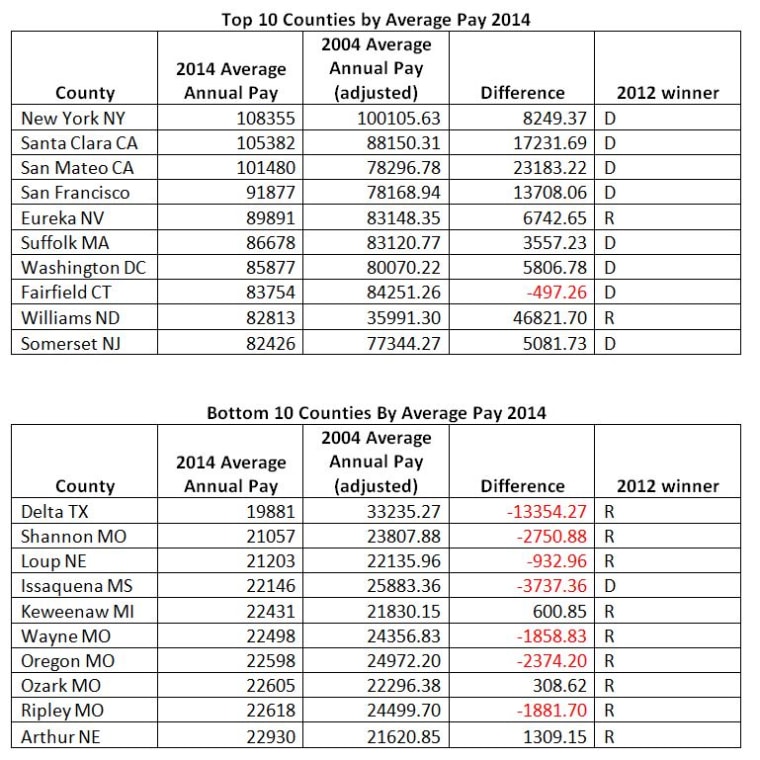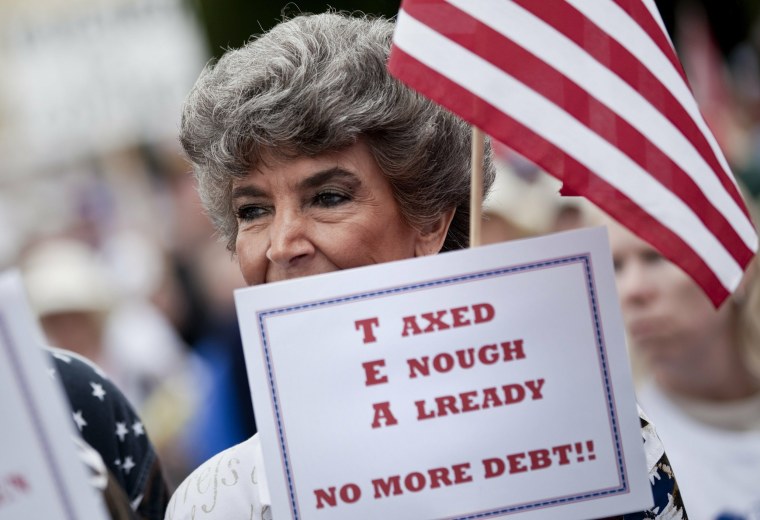It’s been more than six years since the Great Recession ended. The stock market has bounced back and unemployment is as low as it’s been in the last eight years. And yet economic uncertainty and anger persist as 2016 presidential election topics, driving the campaigns of outsider candidates like Donald Trump.
One big factor in that angst is wages. Stories of flat or negative wage growth have been a consistent part of economic news coverage in the past decade – or more – but wage stagnation is not a problem everywhere. Data shows it is closely tied to where people live and, indirectly, their politics – with big city, Democratic-leaning places generally doing better overall.
There were 238 counties in America where the average annual pay topped $50,000 in 2014, according to numbers from the Bureau of Labor Statistics. (That’s pay per job, not household.) And 84% of those counties saw an increase in average pay between 2004 and 2014.
One other note about them, 51% of those counties voted for President Barrack Obama in 2012.
But the numbers look different as you go down through the income levels. The lower the wage level, the less likely that county has seen an increase in wages. That is places with lower average wages are having a hard time keeping up with the economy as a whole.

Driving the numbers in the table is a crucial fact in the makeup of the modern U.S. economy. The most vibrant and dynamic aspects of job and wage growth are occurring in around the nation’s big cities.
Increasingly, those places are hubs for industries like tech, finance, media and real estate – think of New York, Los Angeles, Chicago and Denver, all of which have seen upticks in average pay over the period. Politically speaking, they hold a lot of votes and tend to be strongly Democratic in their voting habits. Everyone one of those big cities, and many others, went for President Obama in 2012.
Conversely, in that top group of 238 counties, many of the Republican-voting entries are more sparsely populated places that saw a spike in wage growth with the oil and gas extraction boom. On the list are counties such as Williams, Slope and Dunn counties in North Dakota, all of which have populations of less than 30,000.
The wage point is further driven home when you look at the top and bottom 10 counties for average wages in 2014.

The comparisons here aren’t perfect, of course. This is a survey of employers, not employees. So these are wages paid in these places. But the geography are politics are still striking.
Note the three Bay Area counties sit in the top four in wages, all of which have seen average pay grow by more than 10,000 in the last decade. And New York and Washington DC sit in that top 10 as well.
And on the second table, note the more rural locales, from Delta County, population 5,200, to Keweenaw, population 2,220 to Arthur, population 453. Rural places, particularly those without strong agricultural sectors, have long been falling behind economically.
But the bigger point in these numbers is that wage growth, or lack of it, actually has a strong urban-rural and political dimension in 2016. And some of that voter anger, particularly on the Republican side is tied to very real economic concerns regardless of what the unemployment numbers say.
